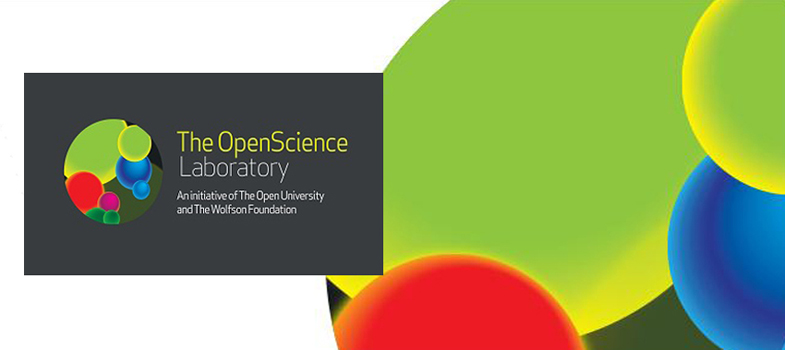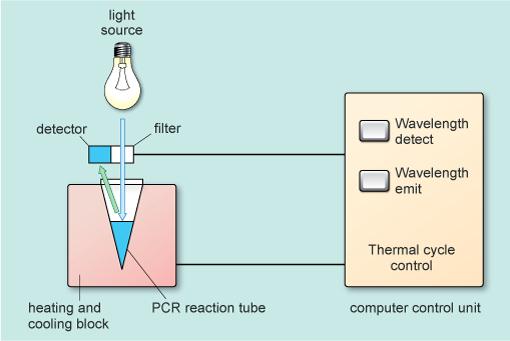9 The PCR machine
The PCR cycle of heating to denature, cooling to anneal and then heating again to extend with Taq polymerase is carried out using a programmable machine called a thermal cycler or PCR machine (Figure 5). The PCR machine shown in Figure 5 can also quantify the newly synthesised double-stranded DNA made during each cycle.
As the number of copies of the amplified region of DNA increases in the reaction tube it is possible to directly measure the DNA being synthesised by the use of special dyes which become incorporated into any double helical DNA molecules present. The PCR machine uses a beam of light of a known wavelength (488 nm, blue light, Figure 6) which is absorbed by the molecules of dye. The dye molecules then release both a small amount of heat and emit light of a different wavelength (522 nm, green light, Figure 6). This is called fluorescence. This emitted light is detected and easily measured. The amount of light emitted is therefore directly related to the amount of double stranded DNA that is present in the tube which increases with each cycle of the PCR.

In the laboratory, setting up a PCR reaction involves combining special reagents in a clean environment to avoid any chance of contamination that could interfere with the data.
8 Thermal Cycling

